© ROOT-NATION.com - Use of content is permitted with a backlink.
Recently, it became known that Germany will supply Ukraine with 40 Marder armored personnel carriers. Today we are going to tell you all about these powerful German armored vehicles.
This was announced by the official representative of the German government Steffen Heberstreit. “Regarding the transfer of Marder armored personnel carriers to Kyiv, we are currently talking about one battalion, one battalion is about 40 vehicles, these 40 units of armored vehicles should be prepared for shipment to Ukraine in the first quarter of this year,” Heberstreit told reporters.
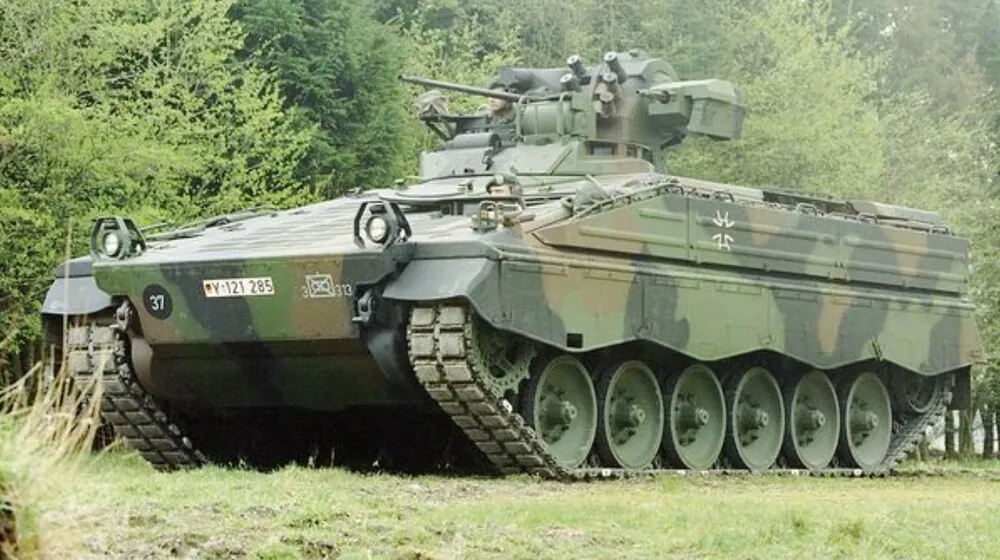
The representative of the German Cabinet of Ministers clarified that the training of the Armed Forces of Ukraine will take place in Germany, and the training is scheduled to be completed by the end of the first quarter of 2023.
Read also: Weapons of Ukrainian victory: M1A2 Abrams tanks
What is known about the Marder infantry fighting vehicle
The Marder infantry fighting vehicle is based on a special tracked chassis that was developed in the early 1960s as a common platform for a range of armored vehicles, including BMPs. The Germans focused on crew protection and mobility.

This vehicle was designed to work in conjunction with the Leopard 1 main battle tanks and to accompany them in combat. The armored personnel carrier had the same level of protection and mobility as the Leopard 1 tank.

The Marder was first produced in 1970, manufactured by two companies, Rheinstahl and Mak, and the total volume of BMPs produced reached 3111. In 1975, the production of the basic version of the Marder infantry fighting vehicle was discontinued. Over the years, the Marder has undergone numerous updates, resulting in the Marder 1A1, then the 1A1A and 1A2, and finally the 1A3. All existing machines were modified to the 1A3 standard. Although some APCs have been upgraded to 1A4 and 1A5 standards, the 1A3 is the most numerous version today.
Read also: Weapon of Ukrainian Victory: German Self-Propelled Howitzer Boxer RCH 155
Modification options for the Marder infantry fighting vehicle
Let’s take a look at the options for modifying the Marder BMP. There were quite a few of them, and some of them were very interesting. So, in order.
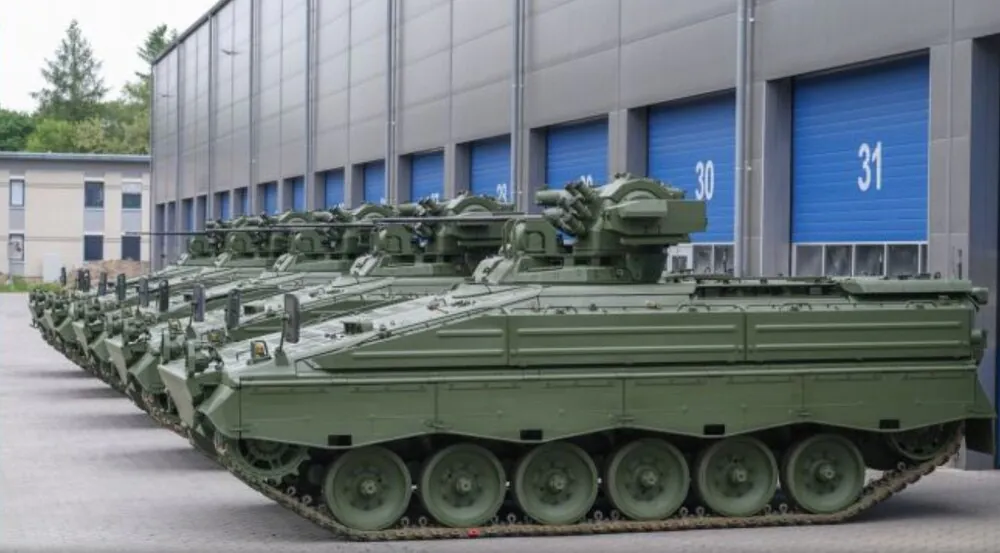
- Marder 1 with Milan: this was the first modernization of the basic version of the German infantry fighting vehicle. Between 1977 and 1979, the Milan ATGM launcher was installed on all Marder infantry fighting vehicle models.
- Marder 1A1(+): a dual feed for the 20-mm gun was introduced, allowing for a choice of ammunition, night vision equipment, image intensifiers and a thermal imager. The number of troops was reduced to five. A total of 674 armored personnel carriers were modernized between 1979 and 1982.
- Marder 1A1(-): as in the previous modification, there were many improvements, but without a thermal imager. It is known that 350 APCs were modernized to this standard between 1979 and 1982.
- Marder 1A1A3: this was a version of the Marder A1 modification, but with SEM 80/90 cryptographic radios.
- Marder 1 A1A is a variant of Marder 1A1, but without passive night vision equipment. The manufacturer said that 1112 vehicles have been upgraded to this standard.
- Marder 1A1A4: This is an upgraded version of the Marder A1A with SEM 80/90 cryptographic radios.
- Marder 1A1A2: a converted Marder 1 with an A1 turret and chassis from the A2 version. This modification did not become popular, so only experimental models were released.
- Marder 1A1A5: another modification of the Marder A1A2, but now with SEM 80/90 cryptographic radios.
- Marder 1A2: Finally, between 1984 and 1991, all German Marder 1 BMPs were upgraded to the A2 standard. This included significant modifications to the suspension, fuel tanks, cooling system and water jet cleaning system. Additionally, a new sighting system was installed. The infrared spotlight equipment was removed, and all vehicles were equipped with thermal imagers, except for 674 A1(+), which already had them.
- Marder 1A2A1: the first and only update of the Marder 1A2 with SEM 80/90 cryptographic radios.
- Marder 1A3: the most popular modification of the German Marder infantry fighting vehicles (1988-1998). There is information that these are the infantry fighting vehicles that will be delivered to Ukraine, so I will tell you more about the Marder 1A3 below.
- Marder 1A4: a small modernization of Marder 1A3 that took place in the 2000s. It concerned the appearance of the SEM 93 cryptographic radio.
- Marder 1A5: In 2003-2004, the new BMPs received additional mine armor and a completely redesigned interior to avoid injuries to the crew when a mine explodes. Only 74 Marder 1A3s were modernized.
- Marder 1A5A1: this variant is equipped with an air conditioning system, an IED (improvised explosive device) protection system and multispectral camouflage.
Read also: Weapons of Ukrainian Victory: German Gepard Self-Propelled AA Gun
What is known about the Marder 1A3 infantry fighting vehicle
The Marder 1A3 is an upgraded version of the Marder family of tracked armored infantry fighting vehicles. The A3 modernization program began in 1988, when Thyssen-Henschel was awarded a contract to upgrade 2,100 Marder 1 A1/A2 vehicles to the A3 standard at a rate of 220 vehicles per year. The first modernized APCs were delivered to the German Army on November 17, 1989.
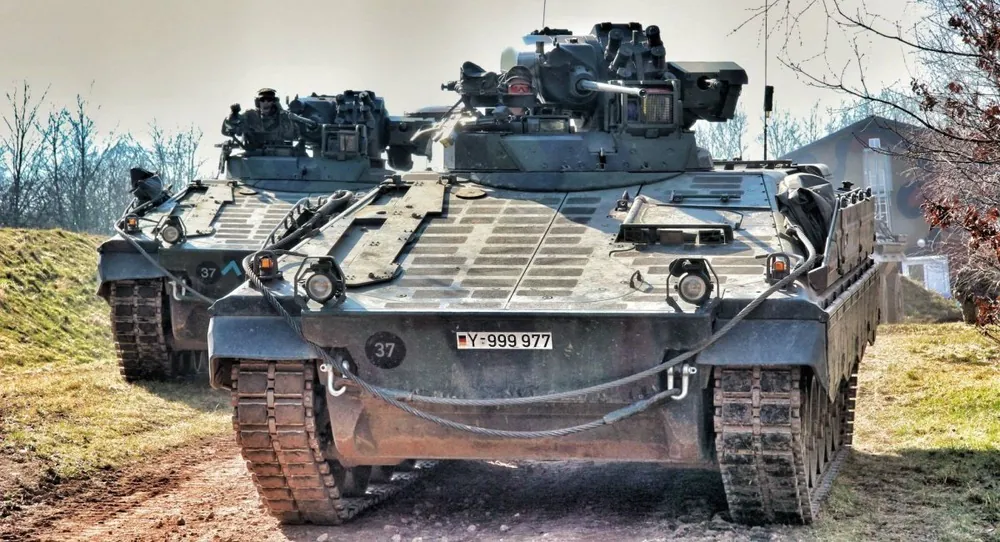
In 2000, Thyssen-Henschel became part of Rheinmetall Landsysteme GmbH to continue the maintenance and modernization of the Marder family of armored personnel carriers.

The Marder 1A3 is the current standard version of the BMP used by the German armed forces, but it is due to be replaced by the new Puma BMP in the next few years. At the end of February 2022, the German company Rheinmetall offered to supply Ukraine with 100 Marder BMPs to fight the Russian invasion, as well as the ammunition needed to use the vehicle. Then, on May 21, 2022, German media reported that the German company Rheinmetall was preparing to supply 100 Marder 1A3s to Ukraine. On January 6, 2023, Germany confirmed the delivery of 40 Marder infantry fighting vehicles to Ukraine.
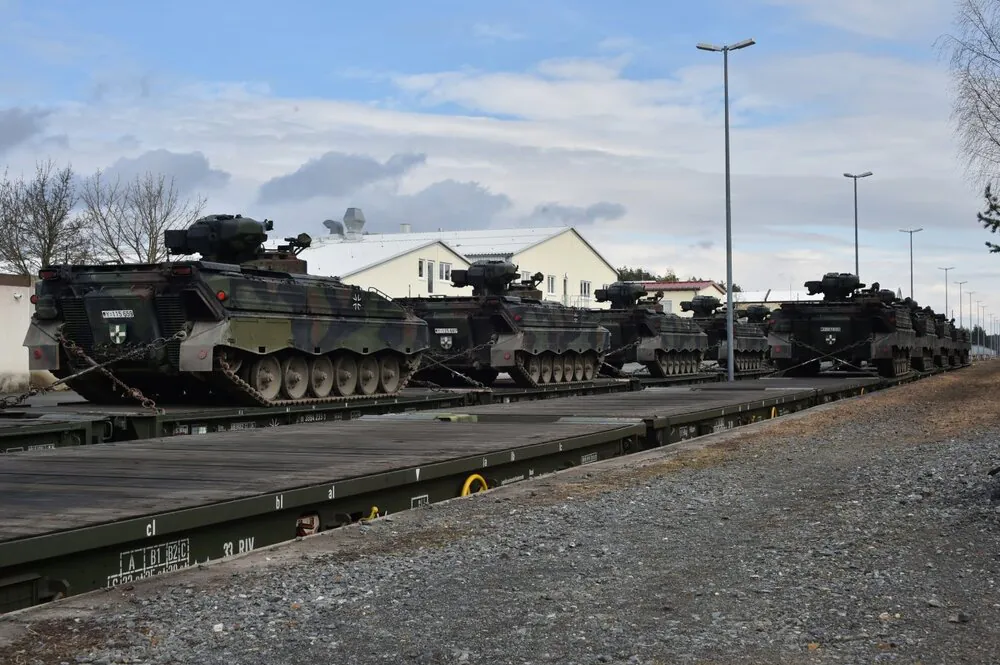
Read also: Weapons of Ukrainian Victory: Leopard 2 Main Battle Tank
Armament of the Marder 1A3 infantry fighting vehicle
The Marder 1A3 infantry fighting vehicle is equipped with a two-man turret, with the commander on the right and the gunner on the left. The commander has a hatch with a one-piece lid that opens to the right, and the gunner has a similar hatch with a lid that opens to the rear. The main armament of the vehicle consists of a single 20 mm Rheinmetall MK 20 Rh202 automatic cannon mounted on the outside. The cannon has an elevation angle of +65°, a tilt angle of -17° and 360° rotation. This gun has a rate of fire of 1000 rounds per minute with an effective range of 2500 meters against ground targets and 1600 meters against air targets. It is a fully automatic gun with a floating base, which reduces recoil and maximizes accuracy, range, reliability and service life.
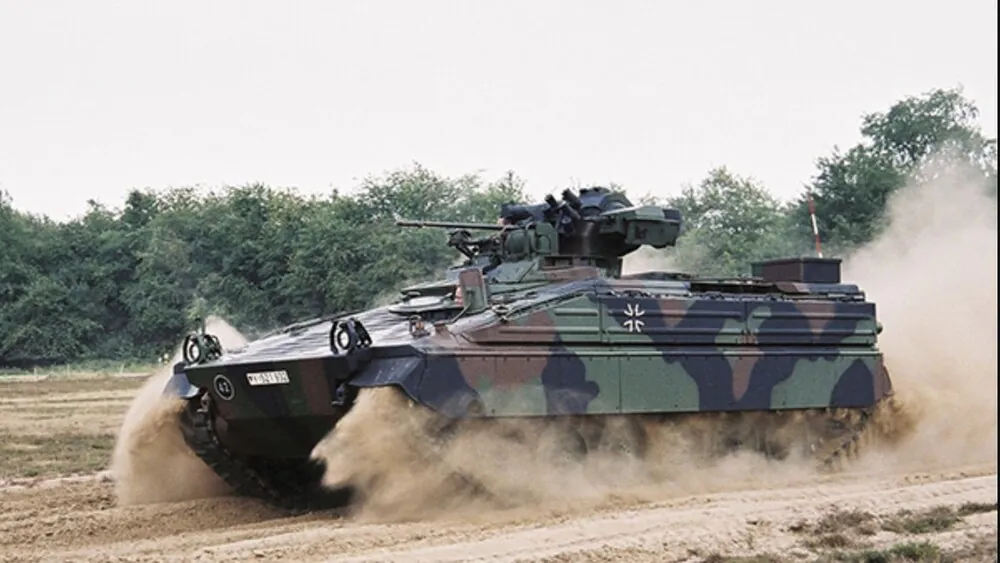
The Marder 1A3 also has one 7.62mm MG3 twin machine gun mounted to the right of the main armament. Between the twin machine guns and the gun are two groups of three 76-mm electrically operated smoke grenade launchers. On the right side of the turret is also a commander-controlled MILAN anti-tank guided missile launcher with one missile ready to fire and six inside the BMP in special containers. The latest generation MILAN missiles have a maximum range of 3000 meters.
Read also: Weapons of Ukrainian Victory: Iris-T SLM for Ukraine from Germany
Appearance and protection of the Marder 1A3 infantry fighting vehicle
The overall layout of the Marder 1A3 is very similar to the previous version with the driver’s seat at the front of the hull on the left side, the engine compartment to the driver’s right, a two-man turret mounted in the forward section and the troop compartment at the rear. This modification includes changes to the internal layout of the turret with an ammunition feed, improved seats of a new design, increased knee room and a larger passage between the commander’s and gunner’s seats. The all-welded steel hull of the standard Marder 1 provides protection for the crew against small arms fire and shell fragments, while the front of the vehicle has been fully protected against 20mm armor-piercing sub-caliber rounds (APDS). The Marder 1A3 is equipped with a new multi-layer armor package that provides protection against 30 mm cannon shells.
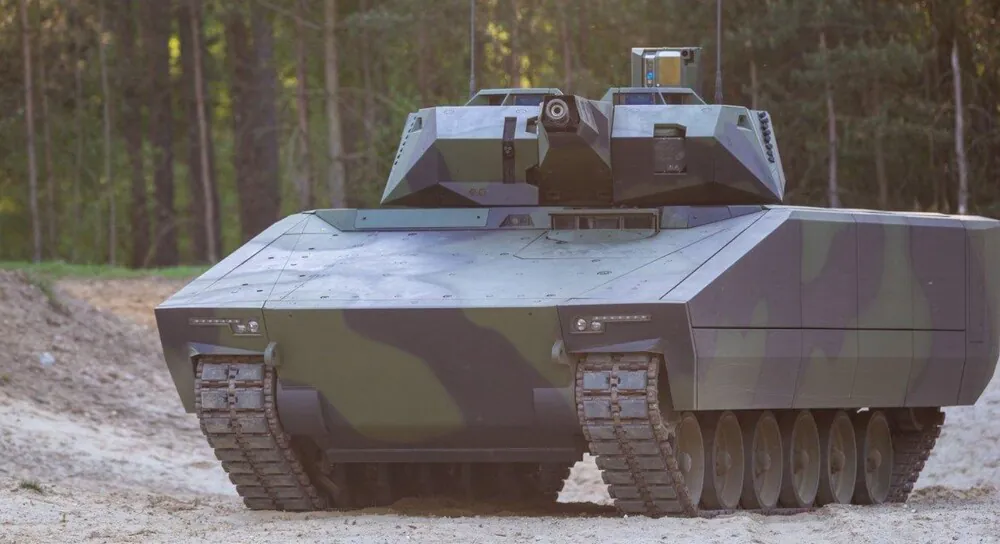
This package consists of additional frontal armor on the hull, conformal additional armor on both sides of the turret, three box-type armor components on both sides of the hull, and spaced armor plates on the roof. Not to forget the additional armor for the armor compartment near the rear door.
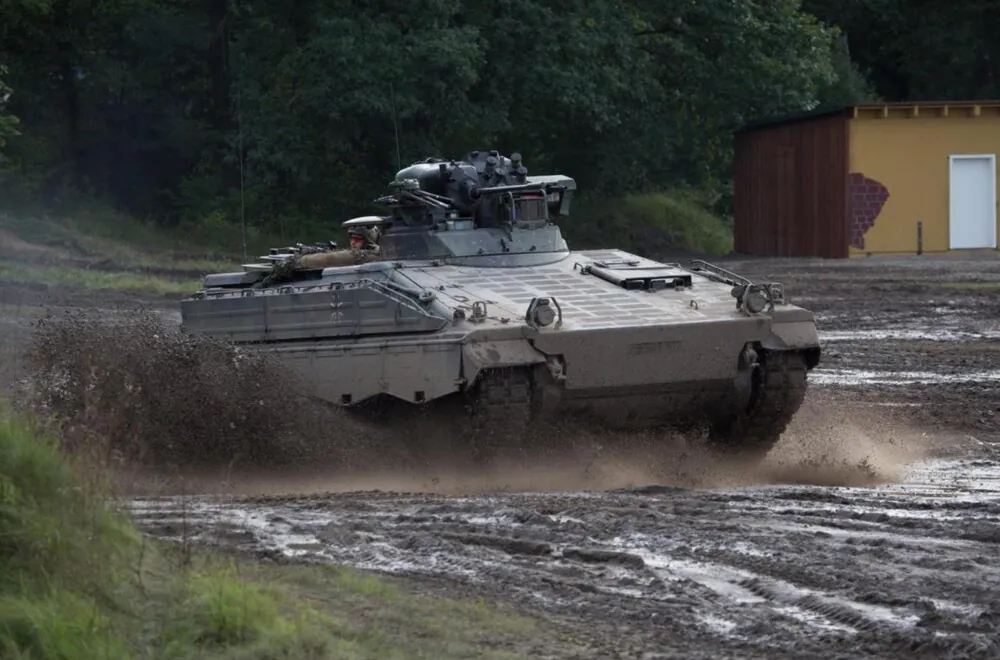
Previous versions of the Marder were equipped with two firing ports on each side of the hull, but the Marder 1A3 has no firing ports due to the additional layer of armor and external storage boxes mounted on the sides of the hull.
In the Marder 1A3, six soldiers sit in the landing compartment at the rear of the hull, three on each side facing each other. There is one more free seat in the rear.
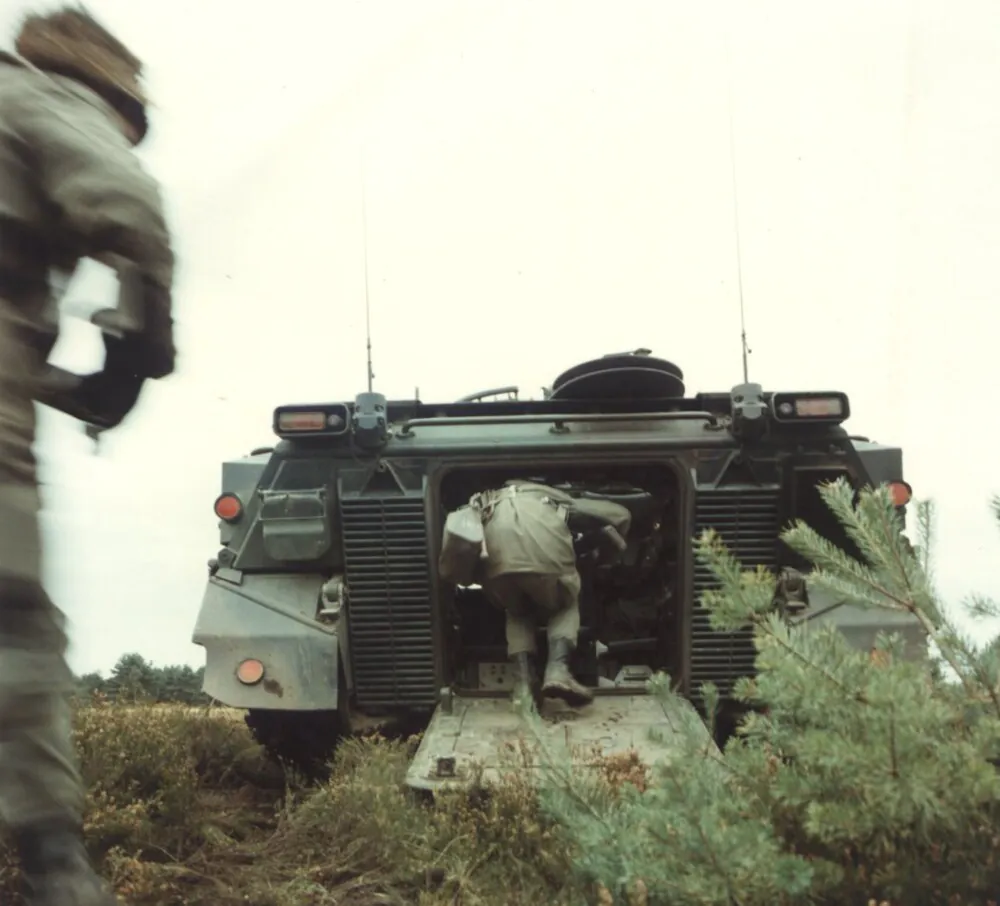
Soldiers can enter and exit the vehicle thanks to a gently sloping, mechanically operated platform at the rear of the hull that opens downward. New storage boxes for items or ammunition are provided along the sides of the upper hull.
Read also: Weapons of Ukrainian Victory: Aspide Anti-Aircraft Missile System
Marder 1A3 engine and mobility
The modified Marder 1A3 is equipped with a 6-cylinder liquid-cooled MTU MB 833 Ea-500 diesel engine developing up to 600 hp at 2200 rpm, combined with a 4-speed HSWL 194 planetary gearbox with 4 forward and 2 reverse gears and an integrated steering and braking system. The 1A3 version uses a new and improved suspension with reinforced torsion bars, a hydraulic dual brake system, and a change in the gear ratio of the side main gears to maintain high mobility.
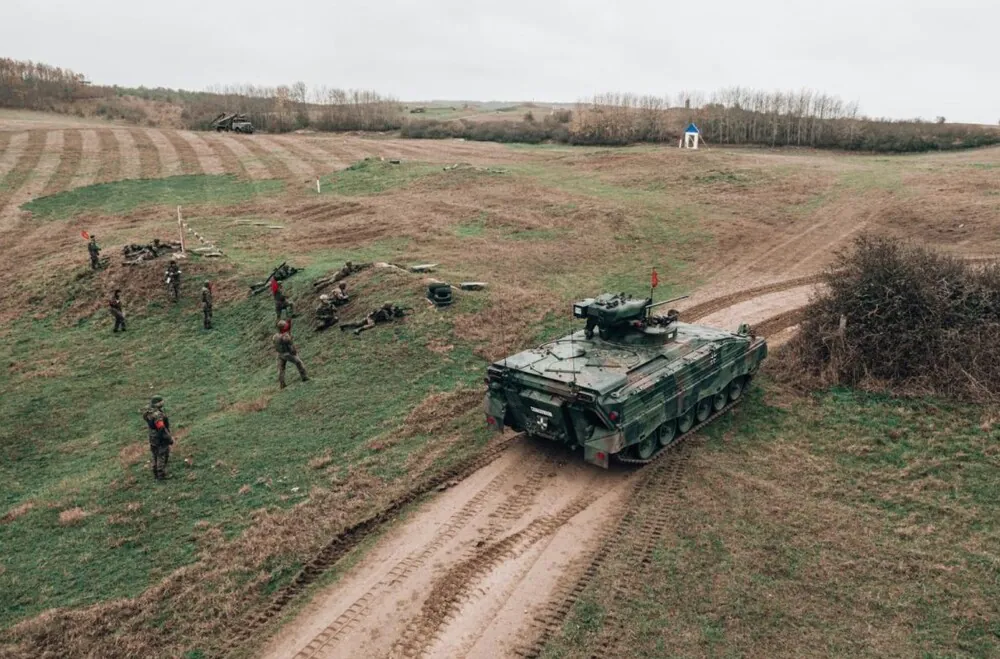
The torsion suspension on each side consists of six double support wheels with rubber tires with a drive sprocket at the front, a tension wheel at the rear and three support rollers. The first, second, fifth and sixth support wheel stations have a separate hydraulic shock absorber. The Marder 1A3 can reach a maximum highway speed of 65 km/h with a maximum range of 500 km.
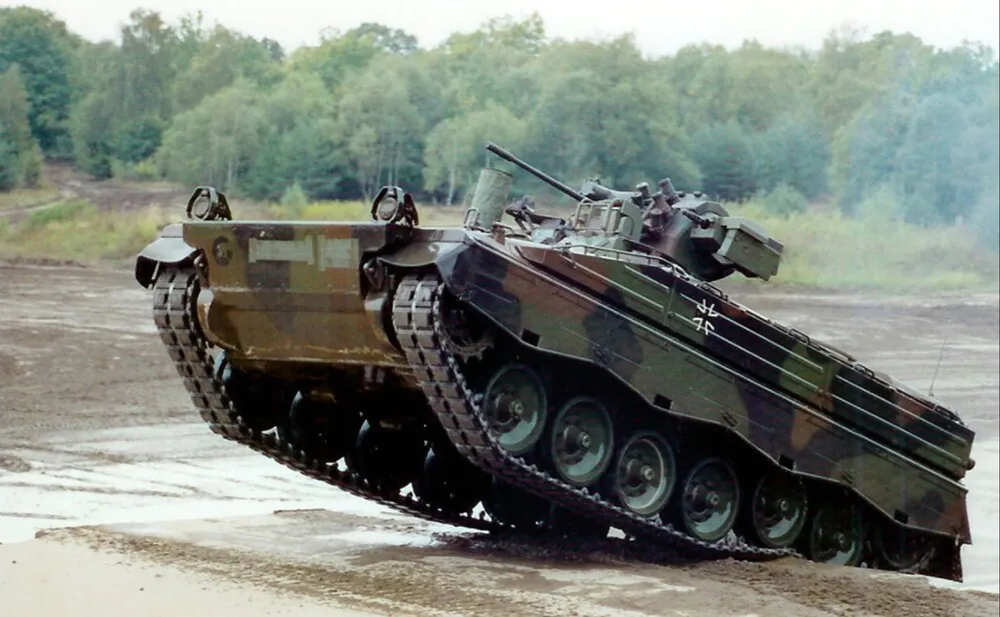
The Marder can ford up to 1.5 m deep without preparation or up to 2.5 m with a special kit. Marder 1A3 can overcome a 60% slope and 30% side slopes. The BMP can climb a 1-meter-high vertical obstacle and cross a 2.5-meter trench.
Read also: Weapons of Ukrainian victory: French Crotale SAM
Additional equipment
The standard equipment of the Marder 1A3 includes daytime periscopes, passive night vision devices, a thermal imaging scope, and an air conditioning system. To protect against weapons of mass destruction (radiation, chemical, biological), the system creates an overpressure inside the hull with a capacity of 3 m³/min. The personnel can stay in it for 24 hours.
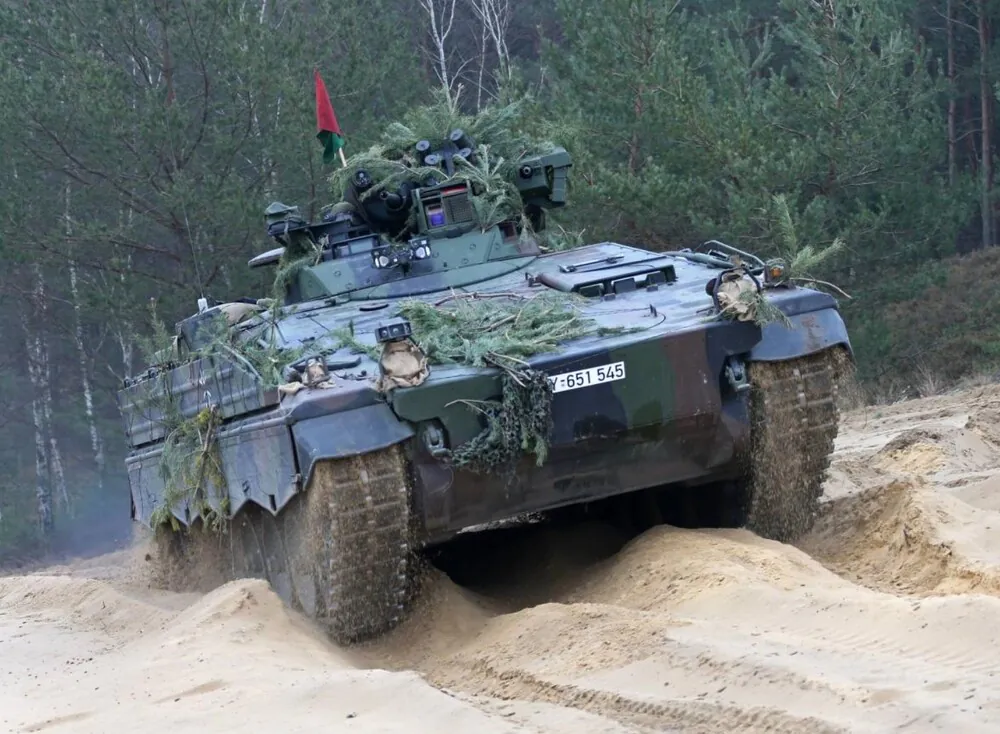
The diesel-electric air heating system of the standard Marder infantry fighting vehicle has been replaced by a hot water heating system connected to the engine cooling system.
As a result, the Marder 1A3 is a fast, maneuverable and well-protected infantry fighting vehicle.
Read also: “Neptunes” knocked out “Moskva” cruiser: All about these anti-ship cruise missiles
Technical characteristics of the Marder 1A3 infantry fighting vehicle
- Dimensions: length 6.68 m, width 3.38 m, height 3.015 m
- Armor: standard protection against 7.62 mm small arms fire and shell fragments, protection against 30 mm cannon shells
- Armament: 20-mm MK 20 Rh202 automatic cannon, twin 7.62-mm MG3 machine gun, MILAN anti-tank guided missile launcher
- Weight: 33.5 tons
- Speed: maximum speed 65 km/h
- Operational range: 500 km
- Capacity: 3 crew members + 6 soldiers
- Additional equipment: daytime periscopes, passive night vision devices, thermal imaging sights, air conditioning system, radiation, chemical and biological protection system.
Read also: All about the General Atomics MQ-9 Reaper
Advantages and disadvantages of the Marder 1A3 infantry fighting vehicle
The main and undeniable advantage of the Marder 1A3 is the level of protection that other infantry fighting vehicles began to approach only in the 2000s. And it is still unattainable for Russian infantry fighting vehicles.
But the Marder cannot overcome water obstacles by swimming, at least not without painstaking preparation and installation of additional floats. However, amphibiousness is mostly a feature of Soviet and Russian BMPs. All other countries prefer armor. Another weakness is the 20-mm unstabilized cannon, which, moreover, requires specific ammunition. The fact is that the main caliber of automatic guns in NATO troops is 25 mm.
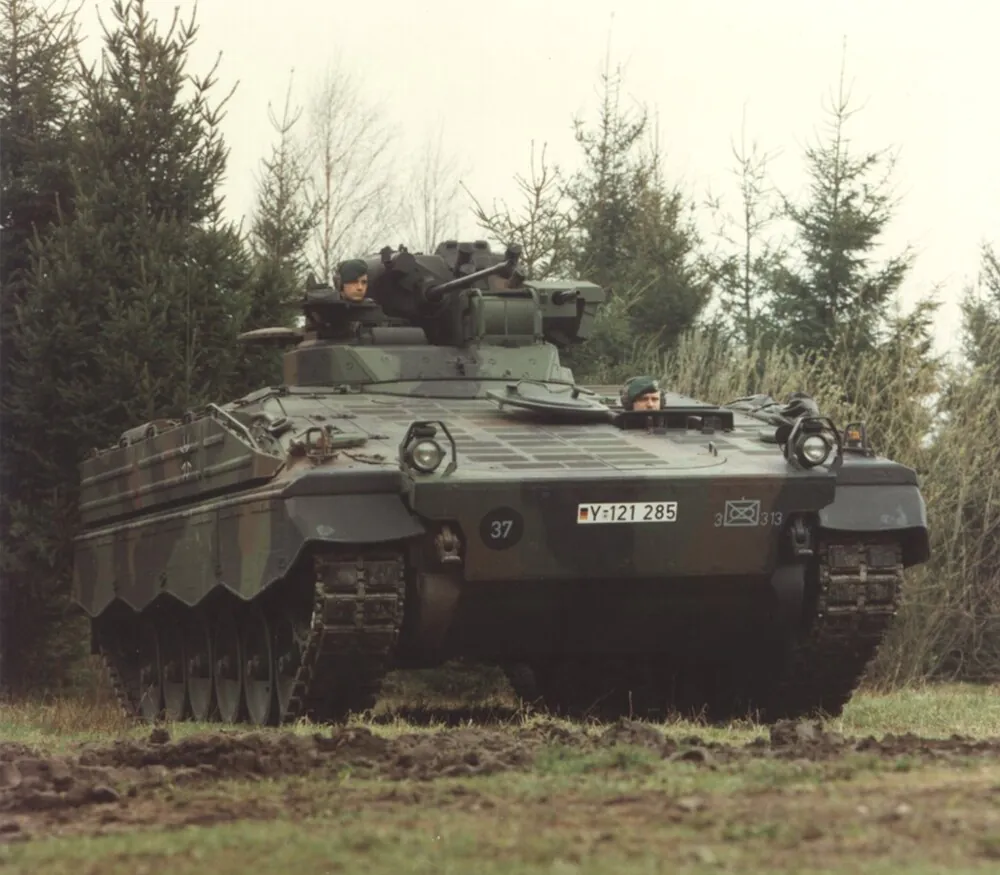
Although, to be fair, it should be noted that the armor penetration of this weapon is enough to destroy almost all APCs, armored personnel carriers and BMPs of the Russian army in all projections and at all realistic battle ranges. The only exception is the latest Russian BMP-3, where the issue of penetrating frontal armor may depend on the range. We also need to take into account the rather sophisticated and powerful sights and other components of the fire control system that provide sniper fire from the ground.
Some experts also have complaints about the Milan ATGM, which has a manual guidance system that makes it impossible to fire on the move. Moreover, to launch it, the commander has to climb out of the hatch and launch it from the launcher itself. However, this is a classic solution for vehicles from the 70s.
In any case, armored personnel carriers can save the lives of hundreds of our defenders and help accelerate our victory.
Read also: Weapons of Ukrainian victory: ATGM Stugna-P – Russian tanks are in trouble
We believe in our defenders. The invaders will not escape from retribution. Death to the enemies! Glory to Ukraine! Glory to the Armed Forces of Ukraine!
Read also:
- Silent killers of modern warfare: most dangerous military UAVs
- Weapons of Ukrainian Victory: BAE Systems CV90 infantry fighting vehicle

